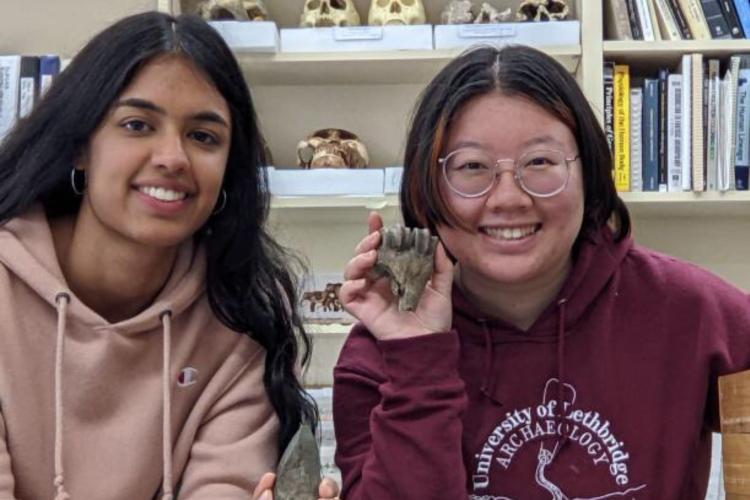Breadcrumbs
Students map the past with artifacts!

Student research assistants Mavis Chan and Tessie Aujla spent their summer cataloguing Beringian artifacts that have never before been found in Canada. Their valuable work was guided by YukonU instructor Norman Alexander Easton, a renowned Beringian archeologist who uncovered the significance of the Little John archaeological site in southwest Yukon.
Once artifacts are found, they need to be analyzed and documented. This summer job contributes a wealth of archeological experience to Tessie Aujla’s education as a third-year student in the Northern Environmental and Conservation Sciences program; close-up with each artifact, she collects precise details and records the data. Mavis, a second-year archeology student from Lethbridge, Alberta, then uses complex digital programming to pinpoint exactly where each specimen was found, showing the distribution and density of the artifacts. Mavis hopes to become a Beringian archeologist herself one day; because there are so few Beringian archeologists in Canada, she has volunteered to come from Lethbridge to Whitehorse to participate in this work and further her studies under Norm with support from the Society for American Archaeology.
The Little John site is the Yukon’s oldest archeological site with evidence of human occupation from 14,000 years ago through to the present. Unglaciated in the last Ice Age, the site contains artifacts and animal bones that give insight to the first inhabitants of North America who used the land from the time they arrived to the present-day as a hunting camp. The students’ analysis of the artifacts provide details to inform a part of a much bigger picture of the past.
The Little John site is on the Traditional Territory of the White River First Nation.
Written by student communications assistant Naomi Dedon.